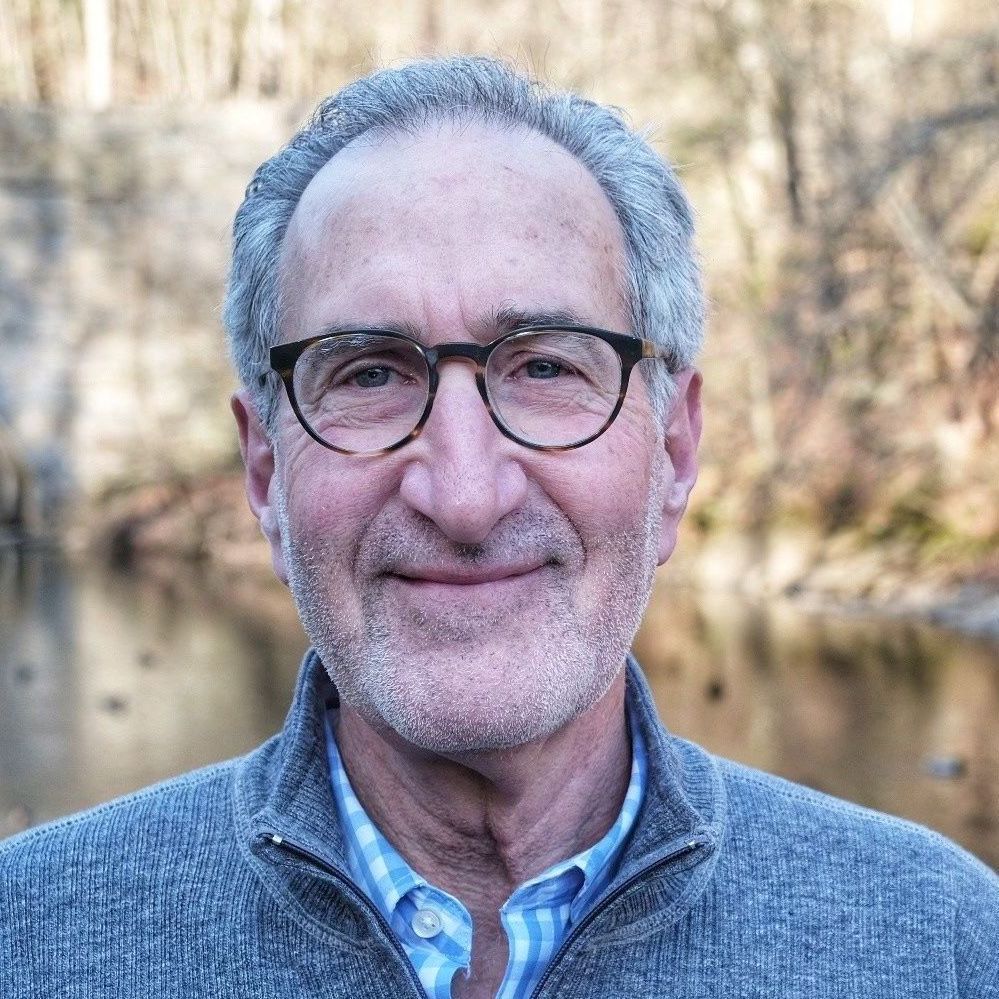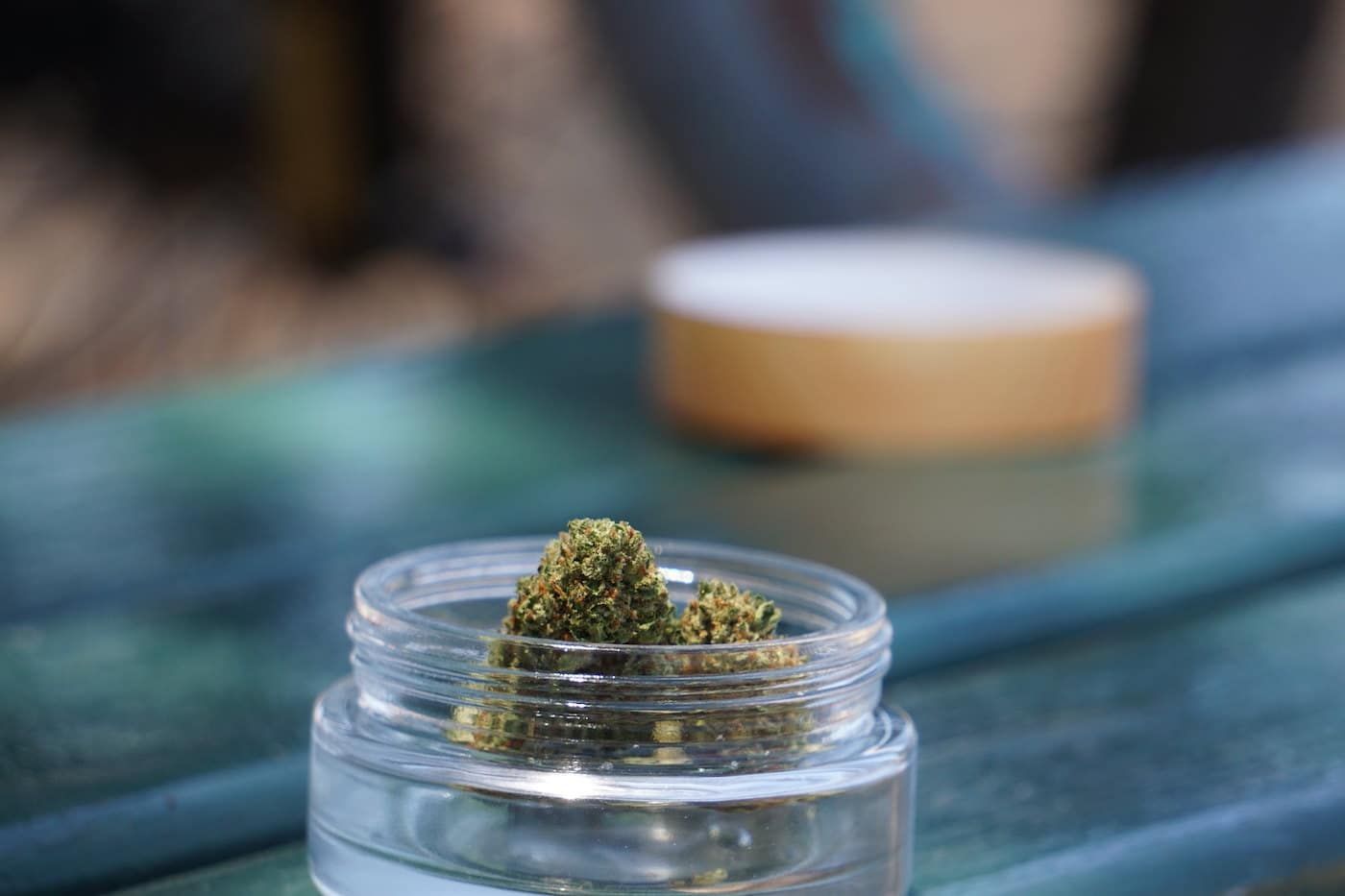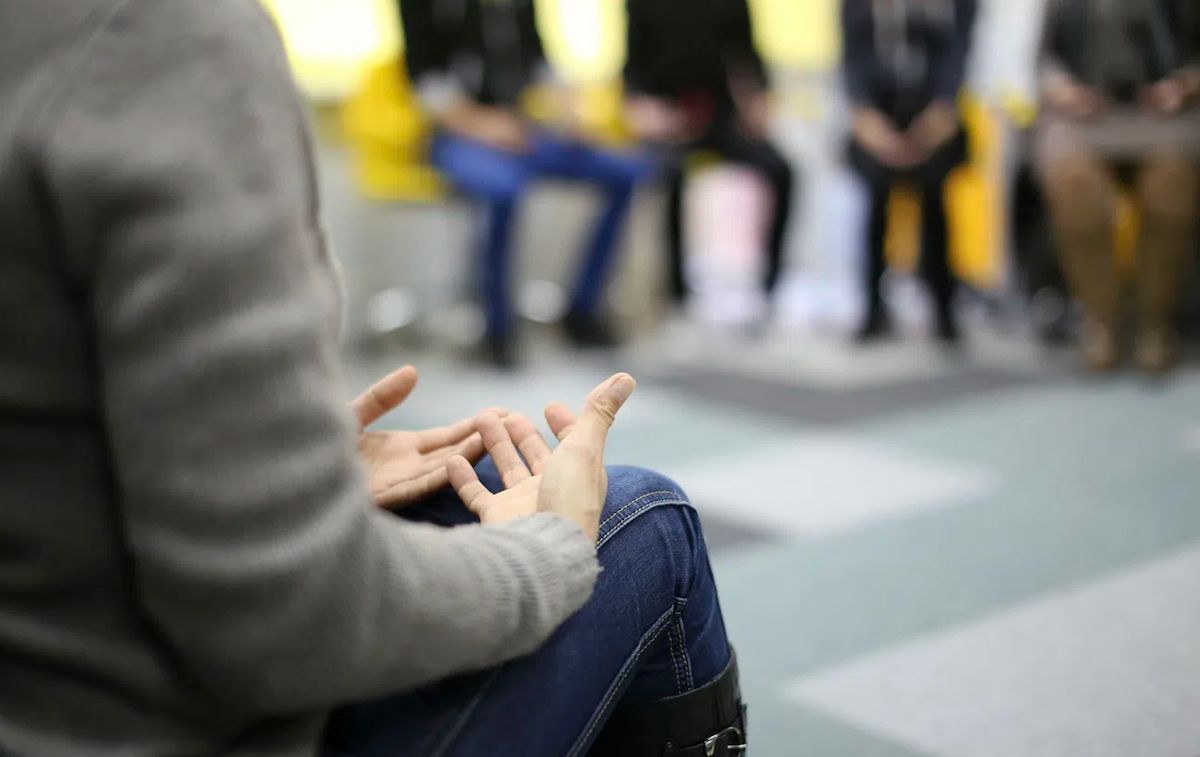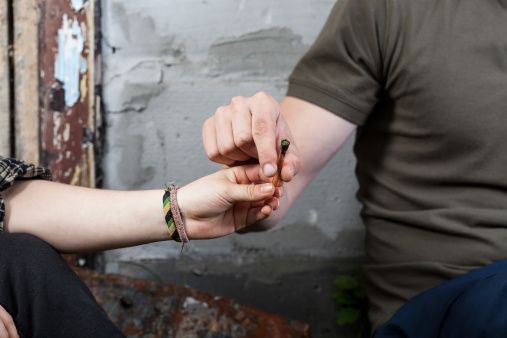Cannabis Stigma Still Alive and Kicking, My Practice Shows
August 2, 2023 | Barry Lessin, M.Ed., CAADC
Cannabis Stigma Still Alive and Kicking, My Practice Shows
Barry Lessin, M.Ed., CAADC, August 2, 2023
Brenda* was in her late 40s, and living with severe rheumatoid arthritis. She sought treatment with me because she was also experiencing PTSD, severe anxiety, and problematic alcohol and benzodiazepine use, which she wished to eliminate. After she had worked through her trauma and her emotional dysregulation, Brenda became more emotionally stable. And she was ultimately able to stop using alcohol and benzodiazepines.
She used other drugs for a different reason: her chronic pain. For many years, she had been able to find effective pain relief from a combination of long-acting fentanyl patches and biologic medicines.
But by the mid 2010s, the drug war had clamped down on opioid prescribing and fentanyl patches were no longer available to anyone. Doctors had begun requiring patients to sign “contracts,” promising not to drink alcohol or use other drugs, in order to get prescriptions for oral opioids.
Brenda had previously found oral opioids to be ineffective for her. She also said that she had an excellent relationship with her rheumatologist of 15 years. Despite this, she was required to sign such an agreement.
Brenda said she felt shame in being treated as a “drug seeker.” And she was now unable to manage her disabling pain. In the past, these had been factors that triggered her alcohol and benzodiazepine use.
Brenda came to terms with it, saying, “I have chronic pain and I have to take BioJesus.”
But she then agreed with her rheumatologist to investigate medical cannabis, which was legally available where she lived in Pennsylvania, as a pain-management option.
So Brenda visited her local dispensary numerous times, trying several different strains. And eventually, she found one particular strain that was effective in helping not only her pain, but her mood and anxiety. It was called “BioJesus.”
Although she had smoked cannabis in college, she still felt awkward talking to dispensary staff about “BioJesus.” She would have felt a lot more comfortable, she said, talking to a pharmacist about medication.
She’s not alone in those feelings. Older patients, particularly, have sometimes told me that they’re leery of trying cannabis because the “playful” strain names don’t reflect the seriousness of their search for an important medication. But Brenda came to terms with it, saying, “I have chronic pain and I have to take BioJesus.”
“The BioJesus worked remarkably well,” she told me, “but the availability was sporadic so I couldn’t be assured of having consistent relief, which compounded my problems.”
She found this incredibly frustrating. “Could you imagine if a diabetic person had an insulin supply issue? It would be catastrophic.”
What’s more, her aging mother was living with her at the time, and strongly disapproved of cannabis use. So Brenda had to hide it—and go outside to smoke.
It isn’t difficult to see multiple layers of cannabis stigma that impacted Brenda’s access and health. Stigma, often hidden in plain sight, has been the experience of many of my clients.
But she lived on the campus of a trade school, where her husband was a faculty member. This school had a “drug-free” policy. So she was left with the choice of either smoking it outside and potentially putting her husband in a difficult position, or walking much further away, which her pain made hard to do.
It isn’t difficult, in reviewing Brenda’s story, to see multiple layers of stigma around cannabis that impacted her access and health. And stigmatization of cannabis use continues to be pervasive in our culture.
That assertion may surprise some people. After all, close to half of Americans now live in states where cannabis is fully legal—and a large majority in states where there is at least some medical access. We overwhelmingly want cannabis to be legal, too.
Yet stigma, taking varied forms and often hidden in plain sight, has been the experience of many of my clients who use cannabis.
Working With Teens Who Use Cannabis
Much of my clinical work is with people far younger than Brenda, along with their families. I often find that youth and their parents have differing views about cannabis use, and I seek to help them all to disentangle myths from reality.
Young people have often discovered that cannabis can help them in ways that parents are likely unaware of. Teens who struggle with symptoms of bipolar disorder, PTSD, ADHD, anxiety or depression may have experimented with cannabis and found that it works to alleviate their symptoms, often without the side effects of psychiatric medications. Parents who were raised with the idea of cannabis as a “drug of abuse” may be deeply concerned.
A frequent example in my practice is when a teen client tells her parents that cannabis helps her sleep or reduces her anxiety. If her parents are overreacting, I may gently suggest that they reflect on their own substance use—whether it’s alcohol, prescribed sleep medications or anti-depressants, or even cannabis—and why they don’t feel alarmed about that.
I’ll often point out, too, that forbidding cannabis use hasn’t stopped their teen from accessing it—whereas teens tend to use substances more safely when they can be open and have their parents’ support.
At the same time, I’ll advise the teen that with any medicine, it’s best to consult with a health care professional trained in recommending and dosing that substance. Cannabis isn’t for everyone: There are obvious risks with medical cannabis for some people struggling to manage their emotions, and generally it’s best that adolescents avoid using cannabis until they are older.
Better knowledge about cannabis empowers people to make informed decisions about the roles it will or won’t play in their lives.
Drug-war propaganda about cannabis, and its continuing Schedule I status under federal law, are wildly inappropriate. Relatedly, the stigmatizing “replacing one drug with another” narrative, which dissuades people from using medical cannabis as a harm reduction alternative, is rooted in misinformation promoted by traditional treatment providers. And though people who use cannabis regularly are as active as anyone else, a persistent, harmful stereotype is that they’re unable to move from the couch.
However, all of us in this field have also encountered legalization advocates who promote cannabis as a completely “safe” drug without any potential harms for anyone. Cannabis has a low risk profile. But as with any drug, there are some potential harms, and denying this does nothing for anyone’s credibility. Cannabis use disorder does sometimes occur—even if this speaks less to the properties of cannabis than to the fact that people may experience addiction to activities of all kinds.
With clients, our conversations often touch on the endocannabinoid system (ECS)—one of the most important regulatory systems in our bodies, yet familiar to very few people outside the cannabis advocacy, harm reduction, or medical communities. It was discovered 35 years ago—astonishingly recent, when you consider that the ECS is vital for almost every aspect of our minute-to-minute functioning. It regulates and controls many of our most critical bodily functions such as inflammatory and immune responses, learning and memory, sleep, emotional processing, pain control, appetite and temperature control.
Our bodies naturally produce molecules called endocannabinoids, which are similar in structure to molecules in the cannabis plant. All of us have cannabis-like molecules floating around in our brains. The cannabis plant’s effects come through the unique way it connects with our bodies’ cellular mechanisms.
Educating my clients about the ECS can help reframe their perceptions of a medicine that can help with many conditions (though qualifying conditions vary by state). In general, better knowledge about cannabis empowers people to make informed decisions about the roles it will or won’t play in their lives.
It’s important to avoid one-size-fits-all platitudes such as “no one with bipolar disorder should ever use cannabis” or “cannabis makes ADHD worse.” There are always important caveats.
I also educate families about the role of the medical cannabis caregiver, which in many states gives a parent the legal ability to purchase cannabis for their child. This allows a parent and their teen to collaborate on what works best for them, thereby building trust and improving the relationship as well as the young person’s health.
Language matters, too. While there is a growing awareness of how the words “alcoholic” and “addict” are stigmatizing, the equally stigmatizing terms “stoner” and “pothead” still seem to be more socially accepted. I sometimes find myself having to educate even my harm reduction colleagues about this.
Cannabis as medicine is not really about getting high. But when people do use cannabis for its euphoric effects—which might simultaneously improve their mood, anxiety or sleep—we should never be judgmental about it. People have wanted to alter their consciousness since people have existed.
Cannabis affects each person differently, so it’s important to avoid one-size-fits-all platitudes such as “no one with bipolar disorder should ever use cannabis” or “cannabis makes ADHD worse.” There are always important caveats to consider. But my clinical experience has taught me that it can be an effective harm reduction tool for many.
I collaborate with my clients to help them find balance in their lives. If they choose to use cannabis, I work to help them do so in a way that is healthier and contributes to their overall life goals.
Parents’ Changing Attitudes Reflect Falling Stigma
The good news is that cannabis stigma appears to be decreasing. I have seen attitudes change over time.
This is reflected by a shift in the types of calls I’ve received from parents seeking guidance about their kids who are using cannabis. Before 2018, the year medical cannabis became available in Pennsylvania, many of the parents who called me were terrified, their fears often based on the “gateway drug” myth.
Today, although parents coming to me are still very worried, their fears are tempered by some awareness that not only can teen cannabis use be a manageable issue, but that in some cases, cannabis seems to help their teens in ways that they couldn’t accept a few years ago.
As legalization spreads and cannabis use becomes more open, parents are less likely to be distraught and more likely to empathize.
Even so, parents continue to struggle in resolving the conflict they have between what they feel is best for their kids versus the fear-based, drug-war and rehab-industry narratives instilled in them for decades.
As legalization spreads and cannabis use becomes more open, however, parents are less likely to be distraught and more likely to empathize. They are more open to wanting to understand the reasons for their teen’s use, and to reflecting on their own cannabis-use experiences as teens.
As stigma decreases, greater numbers of people will be able to use cannabis in ways that make their lives healthier and better. It’s time to dispel myths and let the facts speak for themselves: While cannabis can have harms and is not for everyone, it’s a plant that humans have been safely consuming for over 5,000 years. Science-based information and compassion empower people, and cannabis can make game-changing contributions to human wellbeing.
*Names have been changed to protect sources’ privacy.

Barry Lessin
Barry Lessin, M.Ed., CAADC, is a harm reduction psychologist in private practice, working with individuals and families impacted by substance use. His career spans over 40 years as a clinician, drug policy advocate, administrator, educator and researcher. He lives in Dresher, Pennsylvania.




